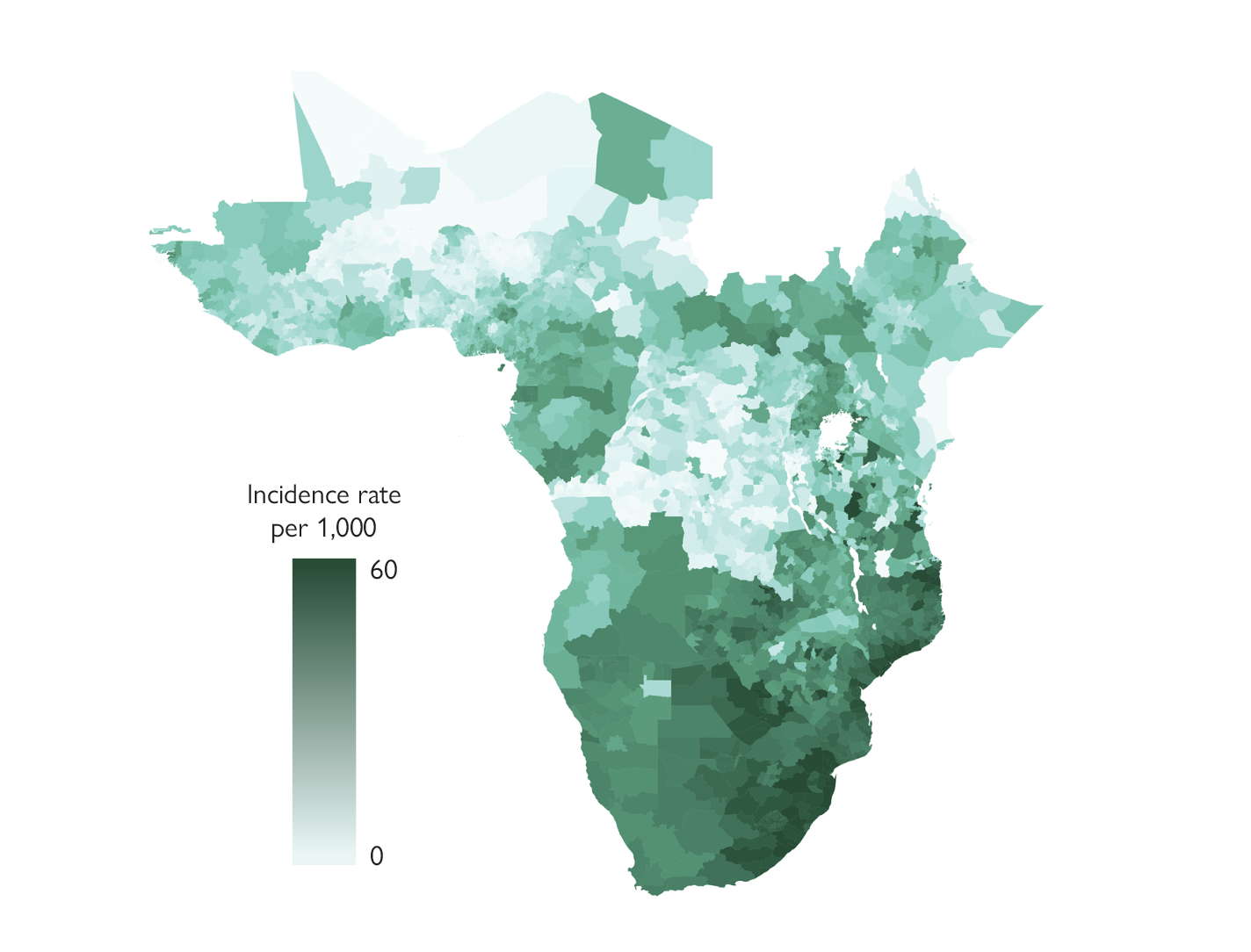Chapter 23 Download Chapter
Who Is at High Risk for Acquiring HIV?
A client-centered approach is an important first step to providing safe and effective care and services. Some adolescents and women who are sexually active are at risk for HIV simply because they live in a place with a high HIV burden. In such places, all adolescents and women who are seeking family planning services should be considered at high risk for HIV. Additionally, women and adolescents who have multiple sexual partners or a partner living with HIV may be at high risk for HIV, regardless of the HIV burden where they live.
| Useful Terms: |
|---|
|
What Are High HIV Burden Settings?
In some parts of East and Southern Africa, a large percentage of the population is living with HIV and many people are getting infected with HIV. These areas are called high HIV burden settings because at least one out of every 20 persons is living with HIV. Another way of saying this is that the HIV prevalence is 5% or greater. Sometimes HIV prevalence among women is high throughout the country, and sometimes there are specific locations within a country with high HIV prevalence among women. In addition, the needs of individuals differ.
Incidence (new infections per 1,000) in 2019 among females aged 15–24 years at subnational levels in sub-Saharan Africa

Note: HIV incidence is estimated as new HIV infections per 1,000 person-years at risk.
Countries: Selected countries in sub-Saharan Africa for which the data required to produce subnational HIV estimates were available.
HIV Risk in Low or Medium HIV Burden Settings
Adolescents and women living in low or medium HIV burden settings (where HIV prevalence is less than 5%) may also be at high risk for HIV. Family planning providers can help adolescents and women determine if they are at high risk for HIV by engaging in a discussion about aspects of their life that may make them more vulnerable to HIV. Health care providers should recommend an HIV test to all clients who may be at high risk for HIV in all settings.
These discussions to support adolescents and women to determine if they are at high risk for HIV can begin with talking about a range of factors that may indicate they are at risk for HIV, as listed in the box below. When possible, providers should use their country’s national HIV guidelines and tools to help clients determine if they are at high risk for HIV.
In these discussions, the provider should use language that is easy to understand, and must avoid being critical or judgmental; adolescents and women should be able to freely answer questions and discuss their concerns without fear of repercussions or judgment. Refer to Chapter 26 – Family Planning Provision for more tips on how to talk about sensitive issues (see the section Successful Counseling).
Chapter 22 on STIs includes detailed information to assist with understanding behaviors that increase STI risk (see Who Is at Risk for STIs?, and Early Identification of STIs).
| Factors that may indicate higher risk for HIV in any setting |
|---|
|